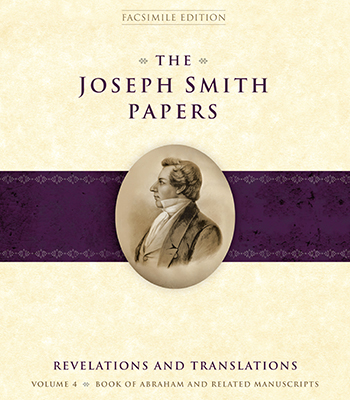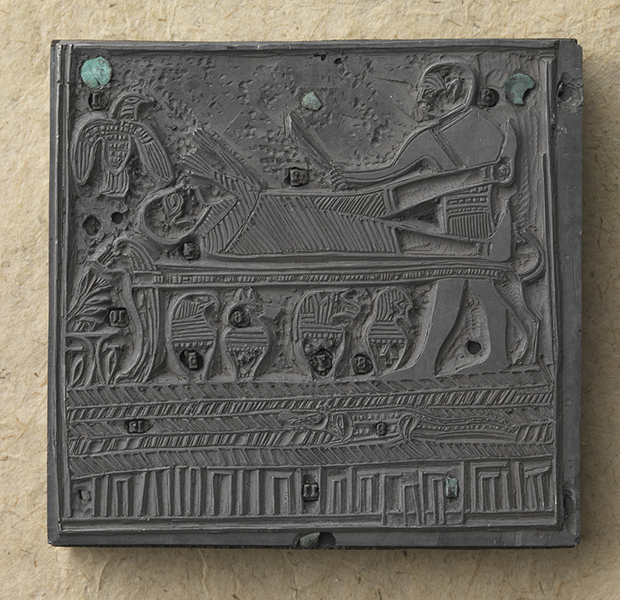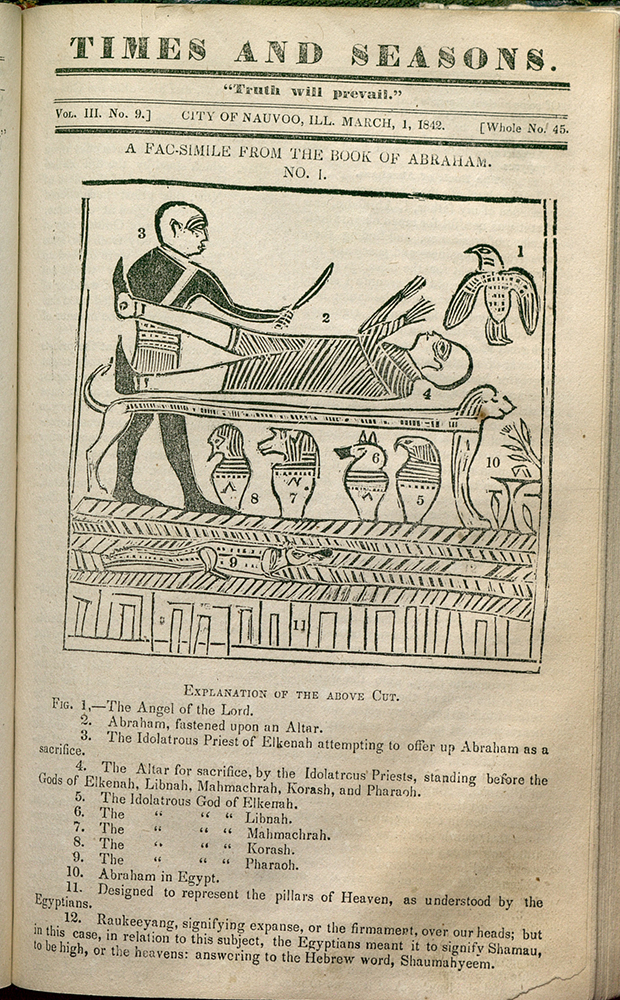Egyptian Papyri, Book of Abraham Are the Focus of the Newest Joseph Smith Papers Volume
Contributed By Scott Taylor, Church News managing editor

This facsimile from the book of Abraham is among the images found in Revelations and Translations: Volume 4 of the Joseph Smith Papers.
Article Highlights
- The newest addition to the Joseph Smith Papers Project documents the translation and publication of the book of Abraham.
“It also takes readers inside Joseph Smith’s study of the Egyptian papyri … which is a history with which few Latter-day Saints are familiar.” —Robin Scott Jensen
Related Links
Volume 4 of the Joseph Smith Papers Project’s Revelations and Translations series—which focuses on the book of Abraham and related documents—has been published and was officially released Monday, November 5.
“This latest volume offers readers an unprecedented look at the manuscripts and earliest publications of the book of Abraham,” said Robin Scott Jensen, one of the volume’s coeditors, in a news release. “But it also takes readers inside Joseph Smith’s study of the Egyptian papyri before he dictated the book of Abraham—which is a history with which few Latter-day Saints are familiar.”
Revelations and Translations, Volume 4: Book of Abraham and Related Manuscripts was edited by Jensen and Brian M. Hauglid and published by the Church Historian’s Press. More information is available at josephsmithpapers.org.

The newest addition to the Joseph Smith Papers series is Revelations and Translations: Volume 4. Photo courtesy of the Joseph Smith Papers.
The publication looks at the book of Abraham and its development from the purchase of Egyptian papyri by Joseph Smith and others in 1835 through the publication of its text and related illustrations in 1842 in the Times and Seasons, a Church newspaper.
The volume consists of three groups of documents—surviving fragments of the purchased Egyptian papyri, the “Egyptian-language documents” created as Joseph Smith and others tried to compile grammar and alphabet tools to assist them, and the manuscripts and first publication of the book of Abraham.
It is one of several Joseph Smith Papers volumes presented as a “facsimile edition”—with the volume featuring full-color photographs of all documents and typographic facsimiles.
Found in The Church of Jesus Christ of Latter-day Saints’ scriptural Pearl of Great Price, the book of Abraham follows the ancient Israel prophet Abraham and details his journey from Ur to Egypt and his activities in Egypt. It also shares an account of the Creation and doctrinal teachings on the plan of salvation, the premortal existence of spirits, and their eternal nature.
The book of Abraham was first published in 1842. While Joseph Smith did not know Egyptian or related ancient languages, the book of Abraham—like the Book of Mormon—is the product of divinely inspired translation.
Wilford Woodruff, a member of the Quorum of the Twelve Apostles, wrote in his journal in February 1842 that “the Lord is Blessing Joseph with Power to reveal the mysteries of the kingdom of God; to translate through the urim & Thummim Ancient records & Hyeroglyphics as old as Abraham or Adam, which causes our hearts to burn within us while we behold their glorious truths opened unto us.”
A conference celebrating the volume’s publication was held October 26 in the Church History Museum in Salt Lake City. The conference included presentation themes on methods and reception of translation and insights into Joseph Smith’s Egyptian-language efforts in general and specifically in the book of Abraham.

This printing plate was used for publishing a facsimile from the book of Abraham in the Times and Seasons in 1842. The image is among many found in Revelations and Translations: Volume 4 of the Joseph Smith Papers. Photo courtesy of the Joseph Smith Papers.

This facsimile from the book of Abraham is among the images found in Revelations and Translations: Volume 4 of the Joseph Smith Papers. Photo courtesy of the Joseph Smith Papers.
